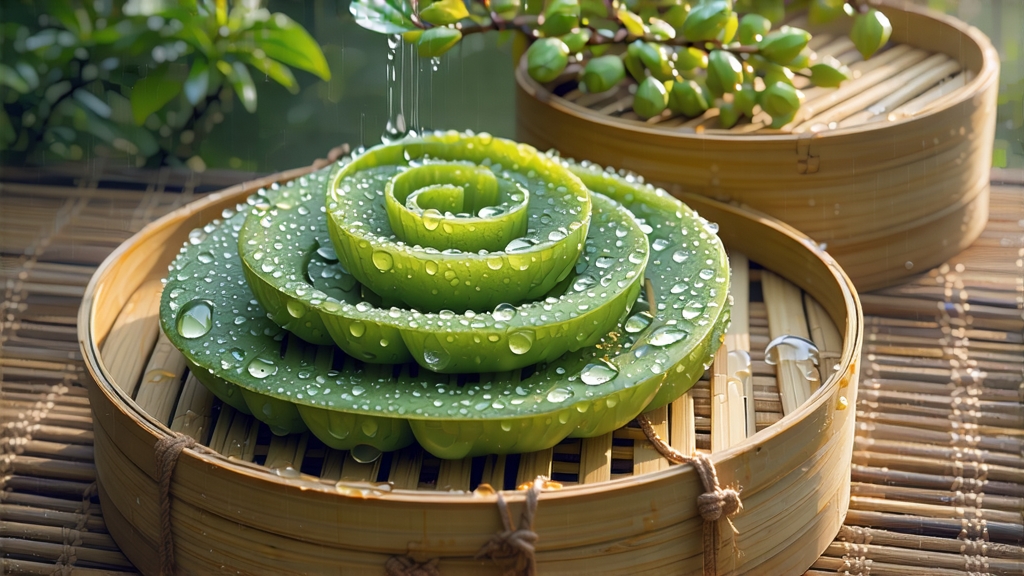
Tucked between the mist-laden banks of Lake Tai and the Dongting hills of Jiangsu Province, Biluochun—literally “Green Snail Spring”—has captivated Chinese tea lovers for more than a thousand years. To the uninitiated, the name evokes a tiny jade snail; to the connoisseur, it conjures an orchard in bloom, a cup that carries the perfume of apricot, peach and mountain air. This essay invites the international reader to journey through the micro-world of Biluochun, tracing its improbable birth story, its microscopic leaf grades, its acrobatic craft, and the quiet ritual that coaxes its full aroma into a glass of warm spring water.
-
A legend written on the water
During the late Tang dynasty, a tea-picking girl named A-Mei lost her wicker basket in a sudden squall on Dongting’s East Hill. While diving to retrieve it, she disturbed a gnarled tea shrub whose tender tips released an intoxicating scent. Monks from the nearby Biyun Temple later brewed the leaves and found the liquor so fragrant that they christened it “Xia Sha Ren Xiang”—“scary fragrance.” When the Kangxi Emperor toured the region in 1699, he judged the name inelegant and rechristened it Biluochun, praising its snail-like curl and early-spring harvest. Thus a folk tale entered the imperial canon, and the tea’s fate was sealed among the “Top Ten Chinese Famous Teas.” -
Terroir: where lake mist meets granite breath
Dongting Mountain is actually a cluster of 72 peaks rising from an ancient rift lake. Warm daytime air rising off the water meets cool granite night breath, forming a 2,000-hour annual fog curtain that filters harsh sunlight and slows photosynthesis. The result is a higher ratio of amino acids to polyphenols, gifting Biluochun its trademark sweetness and low astringency. The soil is a sandy loam rich in magnesium and quartz; its excellent drainage forces roots to dive deep, absorbing trace minerals that translate into a subtle flinty note in the finish. -
Varietal botany: two brothers and a sister
Although any Camellia sinensis var. sinensis bush can be fashioned into Biluochun, three clonal selections dominate commercial lots:
- Dongting Small-Leaf #1: the classic estate strain, prized for its peach-blossom aroma.
- Fuding Large-Leaf #2: a later budding variety that yields a creamier body, often blended for export.
- Wuzhong Aromatic #7: a research-station cultivar bred in 1983, offering heightened geraniol levels and a lychee top note.
Each varietal is grafted onto 40-year-old trunks to preserve genetic stability while boosting yield.
-
The picking clock: 7 days, 5 grades
Harvest begins when the lake’s morning thermometer hovers between 14 °C and 16 °C, usually two weeks before Qingming festival. Only the “single bud just unfolding into a sparrow’s tongue” is plucked. A seasoned picker can gather 600 grams of fresh leaf in a day; that shrinks to 120 grams after firing, enough for roughly 25 cups. The leaf is sorted on the spot into five grades: Supreme (100 % bud), Special (1 bud + 1 initial leaf), First (1 bud + 2 leaves), Second (1 bud + 3 leaves), and Third (broken but aromatic). International buyers rarely see anything below First grade. -
Craft: the 10-minute high-wire act
Within 30 minutes of plucking, the leaf is spread on bamboo sieves no thicker than 2 cm and withered under a gentle lake breeze for 2 hours, reducing moisture to 68 %. The critical kill-green step is performed on a cast-iron wok heated to 180 °C. A master tea maker tosses 250 g of leaf in a clockwise spiral, simultaneously pressing, shaking, and rubbing the buds against the wok wall. The motion must create the tight spiral while locking in color; too heavy and the bud snaps, too light and the curl unfurls later in the cup. After 3 minutes the temperature is dropped to 70 °C for the “li mao” (leave the down) phase, coaxing the silvery pekoe to the surface. Finally, the leaves are